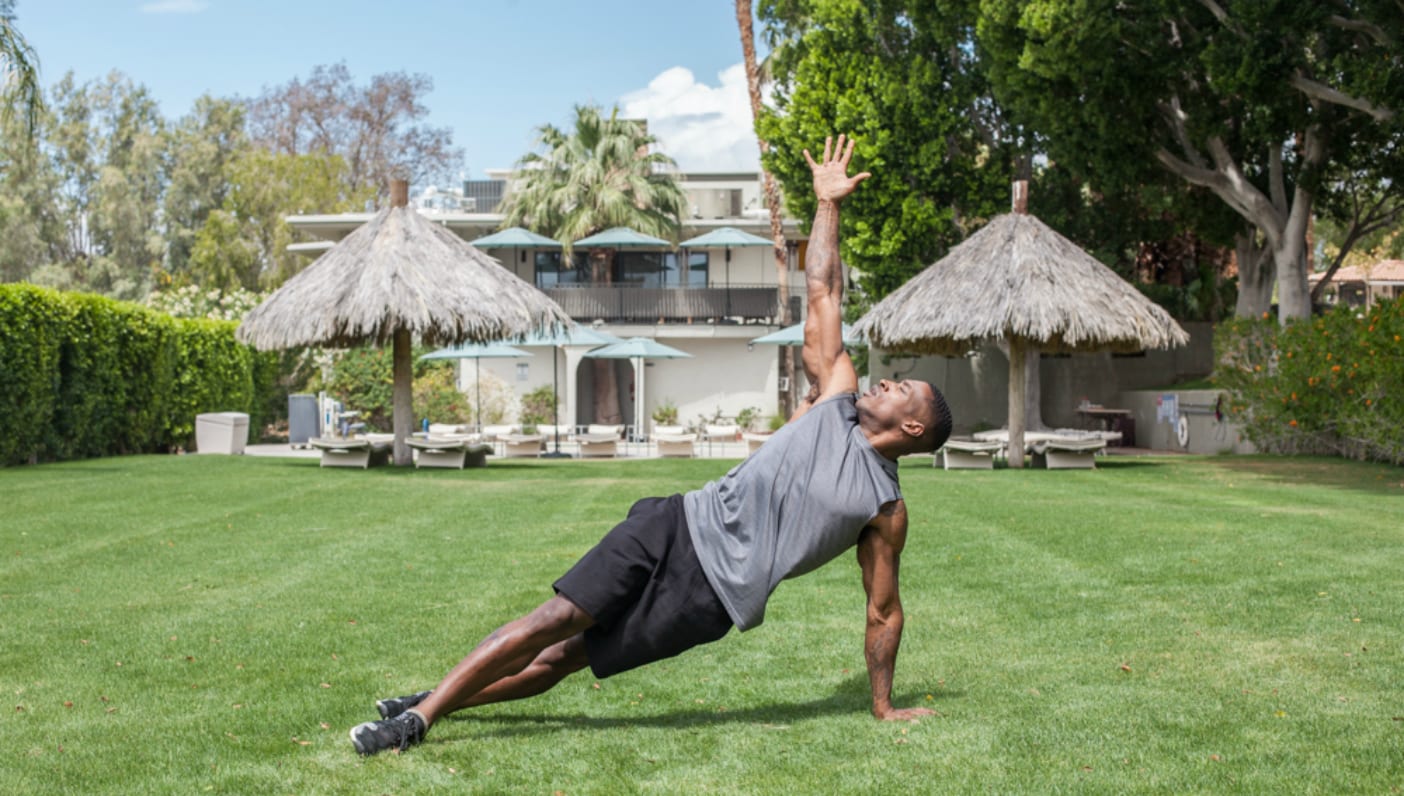
We’ve all been there: Leaving a tough yoga class, the gym, or having hit the pavement for a solid few miles, and despite the sweat dripping down your back, your legs, in crevices you didn’t know you had, you feel freaking amazing. Like, “reaching the summit of a mountain with the love of your life” or “there’s no way something this healthy should feel this good” amazing. You may be a hot sweaty mess, but there’s nothing and no one that could kill that au natural buzz. But why? What’s actually going on inside our bodies that makes sweating feel so darn good? What’s behind that yoga high?
Let’s start with some simple science. Very literally speaking, sweating is our body’s way of cooling itself down when we’re pushing it to the active extreme. What’s emitted is really just the release of byproduct (water, urea, ammonia, salt, and sugar) to regulate core temperature. We have two types of sweat glands: eccrine and apocrine glands. Eccrine glands secrete a clear, odorless liquid, and are responsible for body temp regulation. Apocrine glands secrete a thicker, milkier substance that is broken down by bacteria. Fun fact—that delightful sweat smell comes not from the byproducts we’re releasing, but from that bacteria employed by the apocrine glands.
So, cool… Surprise, surprise that our bodies are able to self-regulate. But a little bacteria and byproduct doesn’t explain the extreme feelings of euphoria and calm that we have when we really get into it. Is there spirituality to sweating? Jacy Cunningham, founder of The Jacy Method, a fitness method that embodies the duality of human experience by combining high-impact movement with mindfulness—according to their website, “where working out meets working in”—believes so.
“When we sweat, we are reminded of so many physical memories where we pushed our bodies beyond their limitations and discovered a new sense of being.”
“I believe sweating is sacred,” says Jacy. “When we sweat we release all of the toxins and negative stories we hold. To sweat is to move. To sweat is to live,” he says. Jacy notes that he feels most alive when his clothes are drenched in sweat—and he’s likely not alone in that. His mentor went as far as to consider sweat one of the three most important pillars to living a happy, healthy life (the other two Jacy’s mentor considers essential are swimming and crying).
A Chemical Romance
The thing about sweating is that it’s a full-body experience. When we’re active, our bodies release endorphins and other “happy neurotransmitters,” including dopamine, norepinephrine, and serotonin in the brain. These neurotransmitters are associated with several positive functions and responses in both body and mind.
“I’ve always recognized that exercise releases the “happy” chemicals in our brain,” says Jacy. “When I move, I’m happy. But I’m not always happy when I move,” he says. For him, movement is a response—a reply to difficult or challenging situations. This isn’t unique to him, he says. “Active people have accessed the space within to bring about shifts in our perspectives of life. When the light of life begins to dim, we MOVE. Movement releases the stories of we’re not enough and provides us with a space of acceptance, a space for love. Movement calms the mind, brings us into our bodies and allows us to bear witness to the stories we create around our lives.”
When we move our bodies, that is, we are able to move through and release the negative and heavy narratives in our brains that are not serving or contributing to our best selves.
Sweating Mindfully
Though extreme activity, while certainly the opposite of a sedentary or passive meditation practice, is not mutually exclusive from traditional mindfulness exercises. For Jacy, it’s when we combine these two ends of the spectrum in our life that we are able to fully embody an intentional lifestyle. When we combine mindfulness with fitness we are bringing our awareness of life into union,” he says.
“We are marrying the masculine and feminine elements of life. I honestly don’t believe you can do one without the other.”
This is the concept behind the “working out to work in” concept of The Jacy Method. To Jacy, working out is a way to go deeper inside one’s own mind and intention, and vice versa. In this way, sitting still is the perfect response to intense movement. Sitting still allows us to bring awareness to the “whys” in our life—while movement allows us to work through what we find. “When we shake up all of the stories held within our bodies—stories of shame, stories of fear, stories of doubt, stories of triumph, stories of pleasure—we need space and time to become a witness to the stir.”
Jacy understands the integration of a mindfulness and a sweat-inducing to be a way of supercharging the development of your soul. “Life is a sacred experience,” he says. “Establishing a mindfulness practice is you committing to you. Establishing a sweat-inducing practice is you committing to you. When we bring these into alignment, there is a new layer of understanding as regards to our soul’s development in this lifetime.”
He likens the African adage that “it takes a village to raise a child” to this integration and exploration of what true wellness really means. “It takes a village,” he says, “of experience, of sweat, and of stillness, to raise an adult.”
—
 Lisette Cheresson is a writer, storyteller, yoga teacher, and adventuress who is an avid vagabond, homechef, dirt-collector, and dreamer. When she’s not playing with words, it’s a safe bet that she’s either hopping a plane, dancing, cooking, or hiking. She received her Level II Reiki Attunement and attended a 4-day intensive discourse with the Dalai Lama in India, and received her RYT200 in Brooklyn. She is currently the Director of Content at Wanderlust Festival. You can find her on Instagram @lisetteileen.
Lisette Cheresson is a writer, storyteller, yoga teacher, and adventuress who is an avid vagabond, homechef, dirt-collector, and dreamer. When she’s not playing with words, it’s a safe bet that she’s either hopping a plane, dancing, cooking, or hiking. She received her Level II Reiki Attunement and attended a 4-day intensive discourse with the Dalai Lama in India, and received her RYT200 in Brooklyn. She is currently the Director of Content at Wanderlust Festival. You can find her on Instagram @lisetteileen.